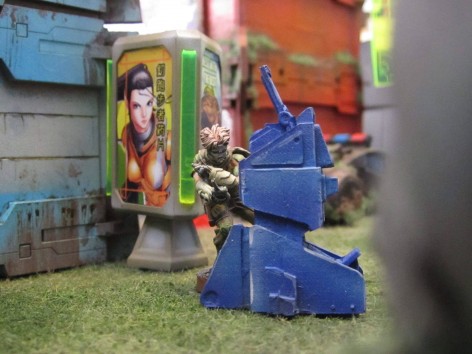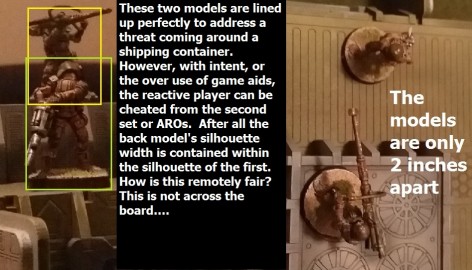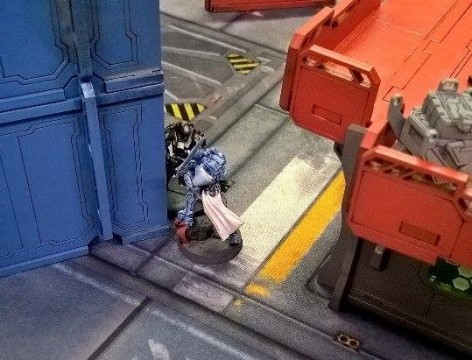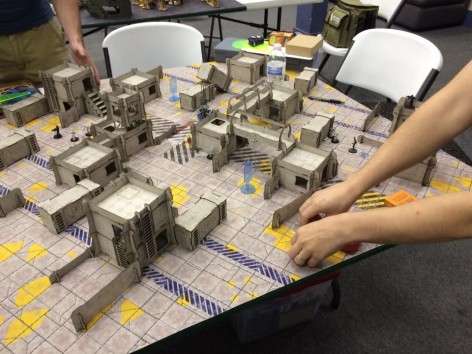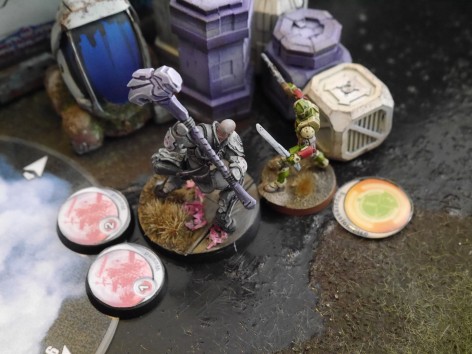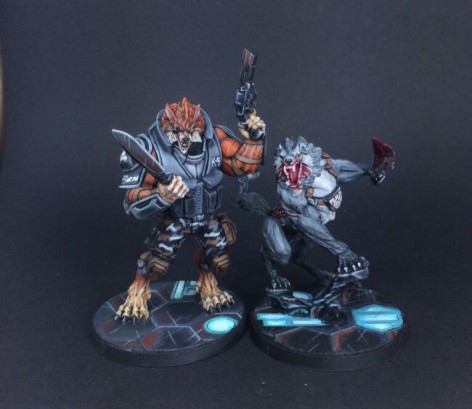Infinity – Moving Forward With the Result – The DiRT
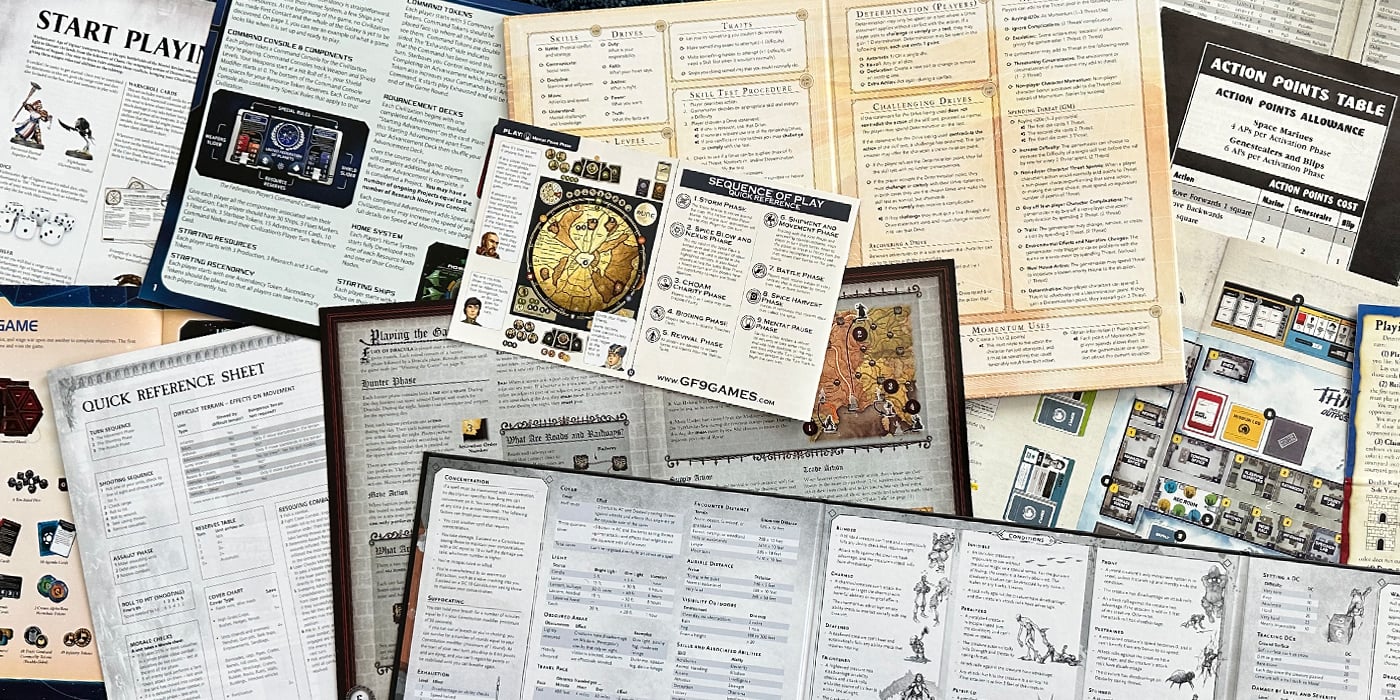

Intent vs Playing the Result #2, here’s all the details you wanted Infinity fans. I hope this helps.
Top Photo by Erich Brackmann painting by Gena Sobolev
So, my last article, who would have guessed that it would have garnered so much “discussion”? Not me. There has been nearly a week of people leaving positive and negative (mostly negative) comments about the details of the article. I was asked on a podcast what I had expected to hear from the article. In all honesty, I thought a handful of T.O.s would have balked a little, but that it was going to get implemented and we’d move on. What can I say, I was wrong about the amount of response.
I got a response from someone saying that the article did not have enough detail, that it did not go into the why’s. I originally was taken aback by this comment, but I realized that there’s a lot of truth to it. I did not take you all on the journey that led me to ask the questions. The journey that made me come to the realization of what I wrote about as intent is inherently game breaking. What I’d like to do with this article, is to walk you back through all of it. Along the way I will address some concerns that I heard, and I will leave it to you to think about.
I am not the bad guy.
I am not looking to dismantle the Infinity community.
I have spent a lot of time building it up, it would be a waste to undo any of that.
Photo by Neill McManus
So we begin….
Let me clear up a few things.
- Playing the result in no way removes the idea of declaring your orders. Nor does it mean that you should not talk to you opponent. The social nature of wargaming is a key differentiator to some other forms of entertainment.
- Using the word “intend” in and of itself does not mean you are playing with Intent with regards to this article or the previous. There were a few people who tried to tell me that they saw a video with Carlos explaining what he was going to do with saying that he intends for his model to do x. This is simply Carlos declaring his orders.
- Intent, as I’m describing here focuses on only one thing. Using words to describe what you want to have happen that dictates the outcome. “I intend to move my model to point x” is a declaration of an order and is not what I’m writing about. “I intend to move my model to the corner of the terrain piece in such a way that I will only see one of my opponent’s miniatures” is using a sentence to subjugate the rules to your will. This is the equivalent of using game aids to get the same result. No one is that accurate. Expecting this behavior from an individual model of yours is a power-gaming mindset. I will return to this later in the article.
The War Against the Reactive Player
I originally did not set out to write an article about Intent vs Play the Results. I originally set out to write an article to help new players who were forced to go second learn how to deploy. This can be confirmed with a handful of people, including Nestor from the WGC Infinity website. Attached to that particular article, I was going to include a video on my YouTube channel titled “Do you even Deploy?” where I did a very tongue and cheek discussion about things a lot of people do that makes for a bad deployment. As I continued to write the article, I started to realize that no matter how a person deployed, their hard work was dismantled as soon as the active player was allowed to used the term “I intend to only have a face to face against one of the reactive players models”. The use of game aids to assist and end up with the same result is equally broken.
I lined up a model directly centered and behind another model only elevated on a hill to illustrate how damaging this mentality can be. Due to visual rules of distance, if both models have the same silhouette, then the model up on the hill’s width will appear thinner than the one in front. This means that you can, at a nanometer level dictate via intent that your active model will only have to face off with the front player. How is it possible that a model so perfectly lined up defensively should not be able to shoot at the active player coming around that shipping container? If you rely on Intent, you run into this issue.
Some of you will say that that is of course too far. But where do you draw the line? Where do you state this intent statement is okay, this other one is not? I had a hard time trying to find where the line exists. For those of you who are starting to see why there is an issue with “Intent”, thank you for opening your mind to that possibility. For those of you who are unconvinced, we’ll keep going.
The Assumption of Fewer Arguments.
One of the most frequent arguments that I get about intent is that it reduces arguments.
The only reason that there is assumed less argument, is that there is a collective agreement to subjugate the reactive player. Don’t believe me? Ask yourself, Do I allow people to deploy with intent? Do you allow your opponent to place their models anywhere and state that they are set up in such a way that no matter how you approach that group of models, you will have to respond to at least 2 aros against your model? Of course you don’t. This would run into a massive cluster. But the reactive player is supposed to allow you to do the EXACT same thing in response.
Photo by Alex Hagerman
The Overuse of Game Aids
One of the hardest questions I received is to respond to using game aids to line up exactly where your model should be. Let’s assume it’s that nanometer discussion from earlier in the article. The argument provided to me was that if I say Intent is wrong, then I should defend the use of laser pointers that net the same result.
Only, it’s the active player’s ability to dismiss the reactive player’s deployment that is the problem. So I don’t think I should defend the use of game aids to subjugate the ARO rules either. Game aids, like laser pointers should be used to determine AROs after the fact.
Moving a miniature a millimeter at a time
Please refer to the overuse of game aids above. The moving of a miniature a millimeter at a time is wrong as well. Sure, someone should be able to walk around a table and see where their opponent’s models are located. Then you pick up your miniature and move it. Want to know why rechecking AROs a millimeter at a time is wrong? Because the way that movement skills work is “You’re able to get to said location regardless of what happens to you in ARO”. You can’t be stopped. At the point you check for AROs after you declare your movement and move, that is the conclusion of your movement for that short skill. So go ahead and move a millimeter at a time. you will chew up all your orders and it will look like you never left your deployment zone.
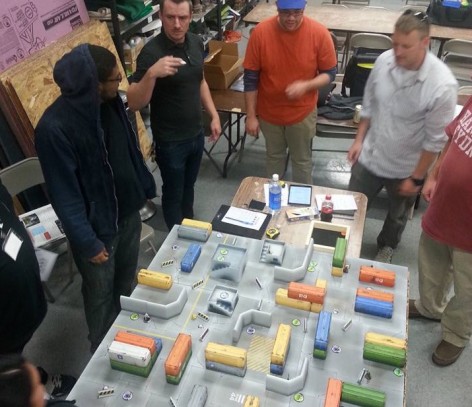
Photo by Derek Fleetwood
Going Back to Infinity 101
When I demo Infinity at GenCon, I explain….
- Declare your first short skill. If it’s a movement skill, move the miniature so that you can see where you line up and AROs get determined.
- Determine if there is an existence of AROs.
- Declare your second short skill. If it’s a movement skill, move the miniature so that you can see where you land. Determine AROs again.
At no point do I state, lay down a reasonable debate and assumption that will circumvent the rules.
Using the Intent methodology is not a show of skill or tactics. It is cleanly delineating that your veteran players are good because they can debate the game better.
Powergaming
So I get people applying arguments from both sides of the fence on this one, so I’m not quite sure how to answer this. I will say that I agree, it’s both.
Intent can be training wheels for new players who will be overwhelmed with the rest of the Infinity ruleset. But even in this situation, I would push for new players to play against new players and play the result. Intent is for that vet player who doesn’t know how to simplify things for a new player.
Intent can also be abused, as mentioned above, to be a powergaming nightmare. The only reason some people may not have seen it as a powergaming is that enough people have agreed to it. And the powergaming disease is shared, people take turns with it. This doesn’t make it right, it just is why people are arguing for Intent.
Photo by Bryant Vichainarong
The Gotcha Method
Some people have responded by belittling what I have tried to explain by renaming “Play the Result” as “The Gotcha Method”. I’m bringing this up here, because it was brought up so often. To be clear, if this is the only argument you have, you don’t have an argument. I tried very hard to leave “Intent” as a descriptor alone. I think it accurately defines the methodology. The sad truth is that Intent is the Gotcha method to the reactive player. With the exception of hidden deployed models, the active player is fully aware of everything going on with the defensive player. There is no “Gotcha” to be had.
When you have a reactive player, who has been diligent in their deployment, being told that they are not allowed to appreciate those tactics, gotchas abound.
Speed of Gameplay
This is the last argument that I receive. I’m not sure that with Intent you can play a quick game of Infinity. Or better, that it could be possibly faster than move my model and we determine the results. Let’s go back to that conversation with intent. The reactive player is agreeing to be subjugated by the active player and helps them move that model back and forth until the model threads the needle to be in a singular face-to-face situation. Compare that to move the model once and figure out what happens. Speed of game play goes to Play the Result.
Photo by Neill McManus
Other Concerns
I want to address other concerns that I think might be at play here. I realize I’m stepping in potentially dangerous waters. I am lead to believe that these things are holding people back from even considering Playing the Result. These are concerns that have not been unambiguously brought to my attention.
- Agreeing with Play the Result does not mean that you are forbidden to play with Intent with your friends. The article last week talked about this very thing. Just because you may know the NFL rules of gameplay doesn’t mean that you necessarily have to use it with every game of two hand touch. This is not a comment about how hard core or soft you are. This is to say that when you’re playing with your friends, the house rules you come up with that make the game fun for you is not the common social contract that should be applied when you’re playing against people you don’t know. It does mean that you should practice with Play the Result before you enter into tournament situations. This is what will make life easier for your T.O. Tournament organizers need to be afforded a lot of praise for all of the things they do.
- Agreeing with Play the Result does not mean that if you originally played with Intent that you should be “scolded” for your behavior. I have talked to more than one player who admitted that they were against my article because they were worried that they would be not be taken seriously with regards to rules in the future or labeled a cheater. Logic and common sense should win out here. When someone brings up a good logical argument, it should be assimilated into the way you address the rules.
- Fear of going against the assumed grain. A poll came out saying do you play with Intent or As it Lands. Again, I would be hopeful that if the poll was in response to my article that it would have been Play the Result, but this is such a minor gripe because so many other comments listed it as “Play it as it Lands”. The reason I bring it up though, Intent players were very much on the attack and drew a huge support base. I appreciated the way the poll was drafted though. It was “How are you playing Infinity”, not “How do you think you might play moving forward”. And I think it speaks volumes about where we all are at, but it’s not “proof” as some Intent players were quick to show me. When some people asked questions in the poll, they were immediately pushed by Intent players. I’m not trying to vilify a group based on a handful of malignant participants. But I can see how I might not want to deal with the same harsh language. All I can say, is that Playing the Result is nowhere near as unpopular as some would like you to think. I was on a podcast on Sunday where a tournament was held on Saturday following my article. Collectively, the group decided to “Play the Result”. No one suffered.
Next Steps
Before you return to lay down a deluge of comments either pro or against, take the time to actually try “Playing the Result”. Also, play against someone you like. If you play against someone you think is a moron, you’re pre-defining the results.
Humor is Important
A lot of people seemed to be involved with making the following image happen. I appreciate the work that went into it….
More Awesome Infinity Goodness (Images from the Web)
photo by Tommy Back
This was the news, the skinny, and the DiRT on the journey toward Playing the Results. I’m hope this answers more questions then we did before. As always, you can reach me in the comments below, on my Facebook page, or YouTube Channel. Ladies and Gentlemen, the floor is yours.


